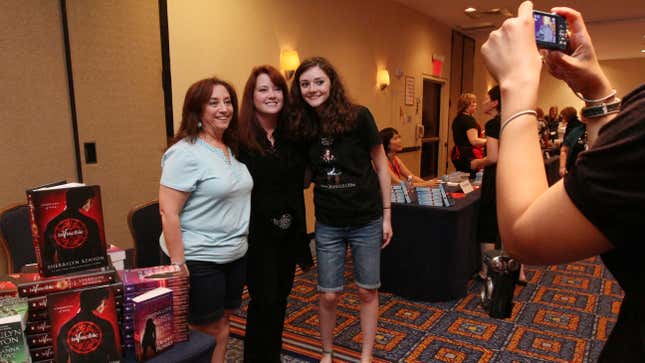The Sad, Murky Story of Paranormal Romance Writer Sherrilyn Kenyon
Latest

In January, paranormal romance superstar Sherrilyn Kenyon filed a shocking lawsuit against her husband, accusing him of poisoning her. Now the case is the subject of a long, meandering investigative piece which attempts to spin a juicy true-crime yarn—but in reality, offers a deeply sad and sometimes subtly condescending story about a woman who achieved a great deal and is now going through a very, very rough patch.
The piece comes from Vulture’s Lila Shapiro. Kenyon is a huge name in romance, though in recent years her star has dimmed somewhat. Long before Twilight, she helped ignite the paranormal subgenre boom of the early 2000s, in a style more in keeping with the goth, leather-pantsed bad boys of Buffy and Laurel K. Hamilton and Anne Rice, who were in turn distantly descended from Dark Shadows and Vincent Price. When I first got my driver’s license, I used my newfound freedom to get to Walmart to buy her Dark Hunter books, in which she blended Greek mythology with vampire lore and a cheerfully campy biker-bar sensibility. The first few books in particular were creative and fun and felt fresh and new. The success was a triumph for a woman who grew up poor in an abusive home and struggled financially for years.
The piece uses an old way of talking about romance writers—a voice that is keen to present them almost as a carnival sideshow, closely examining any gaps or overlaps between their real lives and their works.
But the subgenre lost steam as the 2000s ticked over into the 2010s, with Stephanie Meyer’s sparkly vamps and Vampire Diaries saturating the mainstream and, at the same time, making the popular storylines more teen-oriented. In her own genre, small-town contemporary romance and post-Fifty Shades erotic romance took off. While there are still paranormal romance authors working, and no subgenre ever truly dies, the wildly profitable glory days are over (for now, anyway, but vampires always come back from the dead, eventually).
-

-

-

-

-

-

-

-

-

-

-

-

-

-

-

-

-

-

-

-

-

-

-

-

-

-

-

-

-

-

-

-

-

-

-

-

-

-

-

-








































